
While Jerome’s history grew out of copper and gold mining in the Mingus Mountains, a large portion of Sedona’s history was intertwined with that of the silver screen, with nearly 100 movies being filmed among the red rocks during the Golden Age of the American Western from the 1940s through the 1960s.
Janeen Trevillyan, a historian with the Sedona Historical Society and the Sedona Heritage Museum, made an appearance at the Yavapai College Verde Valley Campus in Clarkdale on Tuesday, Nov. 28, to discuss the history of movie-making in Sedona as part of the Osher Lifelong Learning Institute’s Brown Bag series.
In “1923, 100 years ago, the very first film [Zane Grey’s ‘Call of the Canyon’] was made in Sedona, and since that time there’s been almost 100 feature films made in the vicinity of Sedona and our natural beauty,” Trevillyan said. “It started in black and white, moved into Technicolor … and it was one of the few industries Sedona’s ever had. We went from agriculture to the movie industry and then to the tourism industry.”
The rise of filmmaking in Sedona coincided with the decline of agriculture and the growth of modern consumerism as the nation became increasingly urbanized.
The origins of Sedona’s modern tourism industry can be traced in part to the movie industry, reflecting both the end of the physical American frontier and the embodiment of how the nation saw its own history played out in movie theatres.
“When John Wayne came to Sedona to make a film in 1944, called ‘Tall in the Saddle,’ that’s when everything changed in terms of Sedona getting a lot of repeat business and attracting a lot of movie crews,” Trevillyan said.

Photo courtesy of Bob Bradshaw
“He’d met the movie outfitter in Flagstaff named Oscar Giles, the company was the Anderson Boarding and Supply company and they were a cattle outfitting operation. But they had expanded into supporting the movie crews by providing things that movie crews need, including catering.”

Wayne announced that he was going to produce and star in his next movie, “Angel and the Badman.”
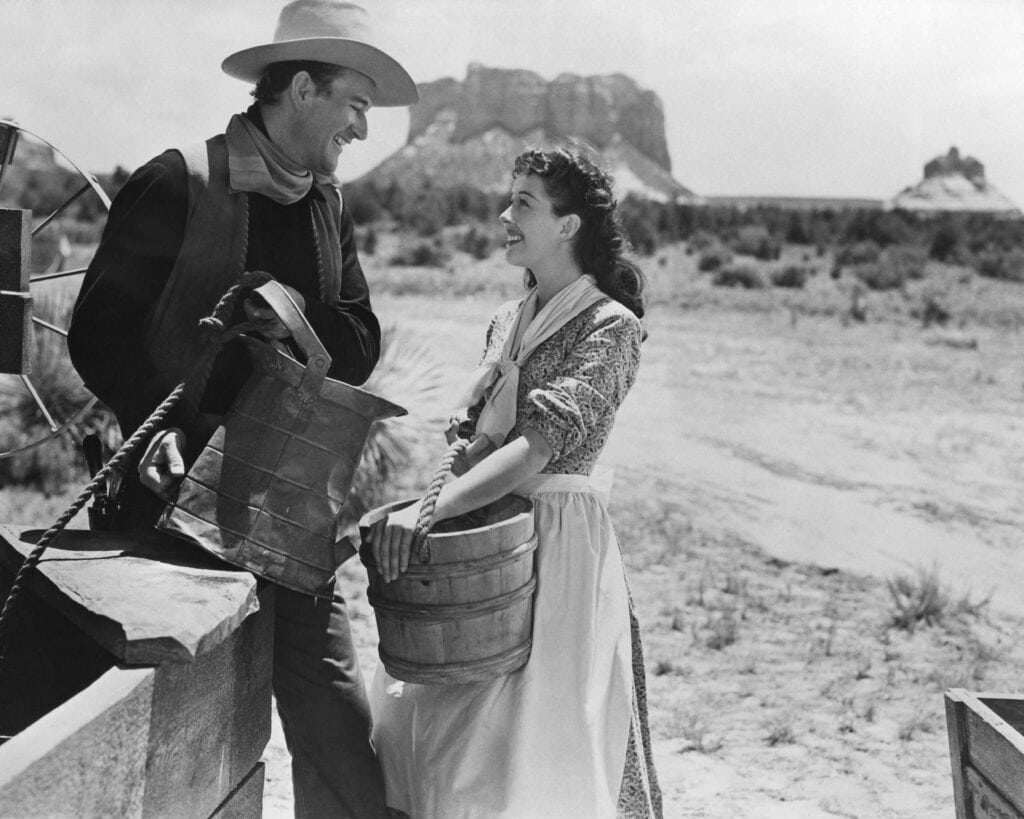
“Giles and Wayne made [an] agreement that if Wayne would bring his film crew to Sedona, Giles would build the first motel in Sedona,” Trevillyan said. “Prior to that, if you were making a movie here, you were living out of a tent, or you were driving down gravel road switchbacks every day from Flagstaff. Maybe you were lucky enough to rent a house, but there were no motels in Sedona.”
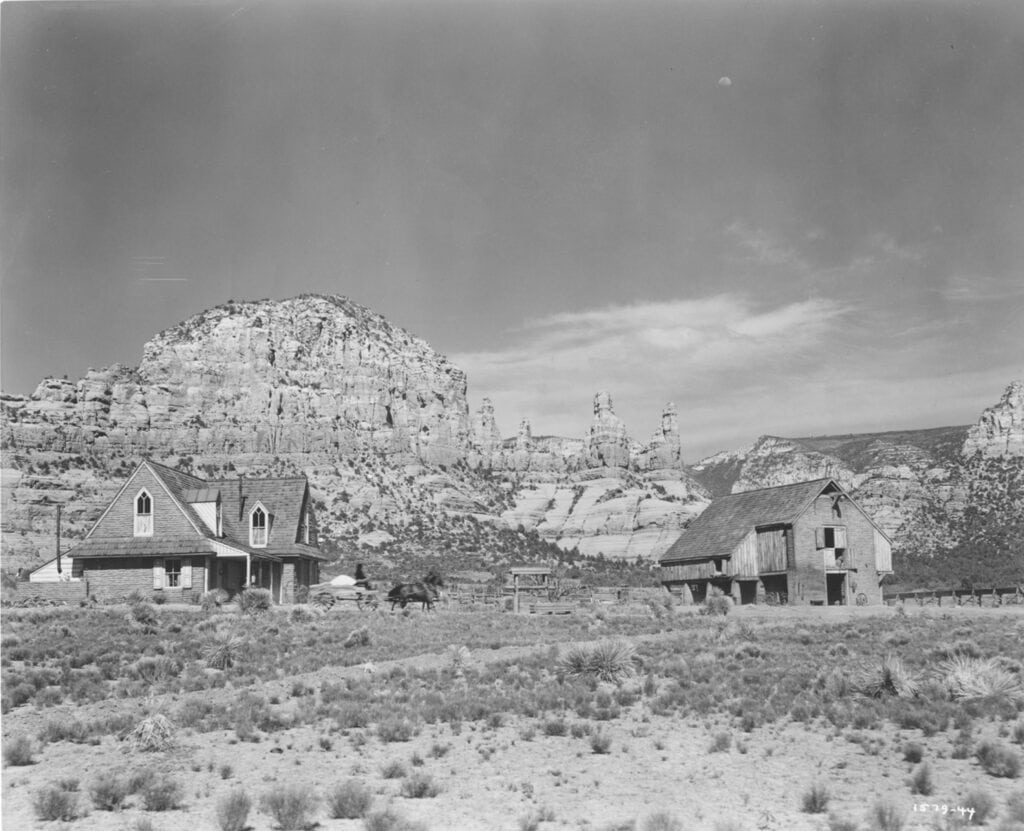
Giles had an ambition to replace the aging structures of the Civilian Conservation Corps camp and eventually was able to do so with the Sedona Lodge. The lodge, which stood where the Arabella Hotel is currently located, was designed to accommodate 300 people and two film crews. Following Wayne’s commitment to shoot the film in Sedona, construction of the Sedona Lodge commenced to coincide with the movie’s production.
The movie industry in Sedona served as an income source for many locals, as tourism at the time was limited to two to three months out of the year. Carpenters, cowboys and cooks were all needed. Locals who took jobs in the industry might be providing onset security, acting or leasing their livestock, like Faye Crenshaw, who owned around a thousand acres of ranchland near where the Hilton in the Village of Oak Creek currently stands.
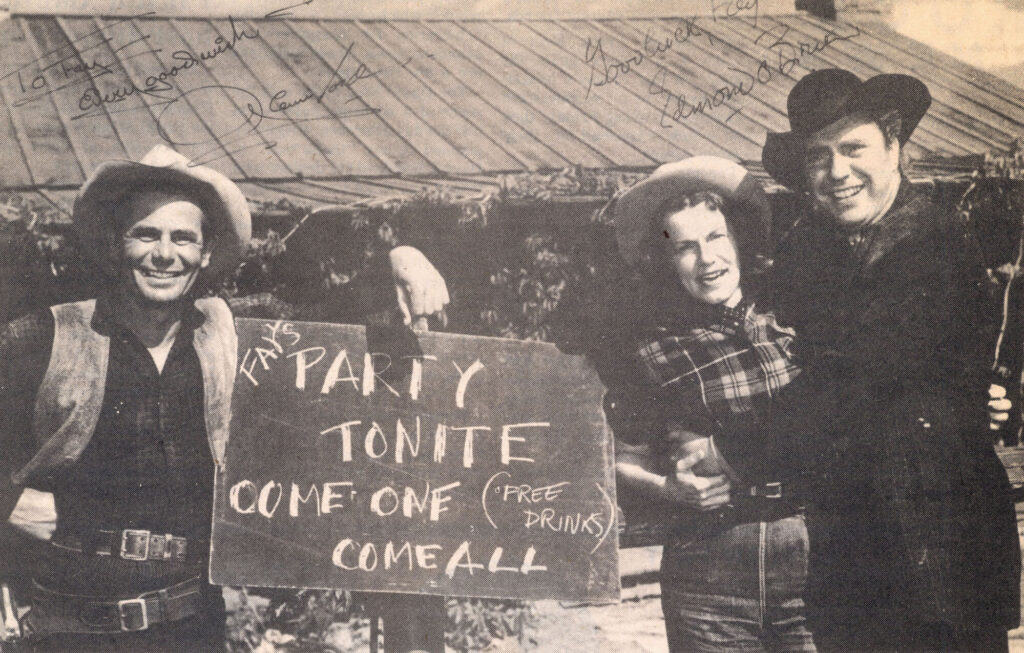
“She would rent out her animals,” Trevillyan said. “She was a riding double for a lot of the women’s stars in these movies and she would ride whenever they needed somebody to ride fast through brush, and that would be Faye. Faye Crenshaw noticed what was happening and, smart woman she was, [in] 1950 she put a sign out and was the first licensed realtor in Sedona. Because she could tell where this was going to take the whole community, stars and crews patronized the local stores, the bars and they did sometimes stay in private homes. It all meant cash to the town.”
Sedona’s film era began to come to an end, at least for famed director Delmer Daves, who directed the original “3:10 to Yuma,” in 1956 while he was shooting “The Last Wagon.” Aircraft noise from the airport on Table Top Mesa that had been completed the previous year kept interfering with his audio recording.
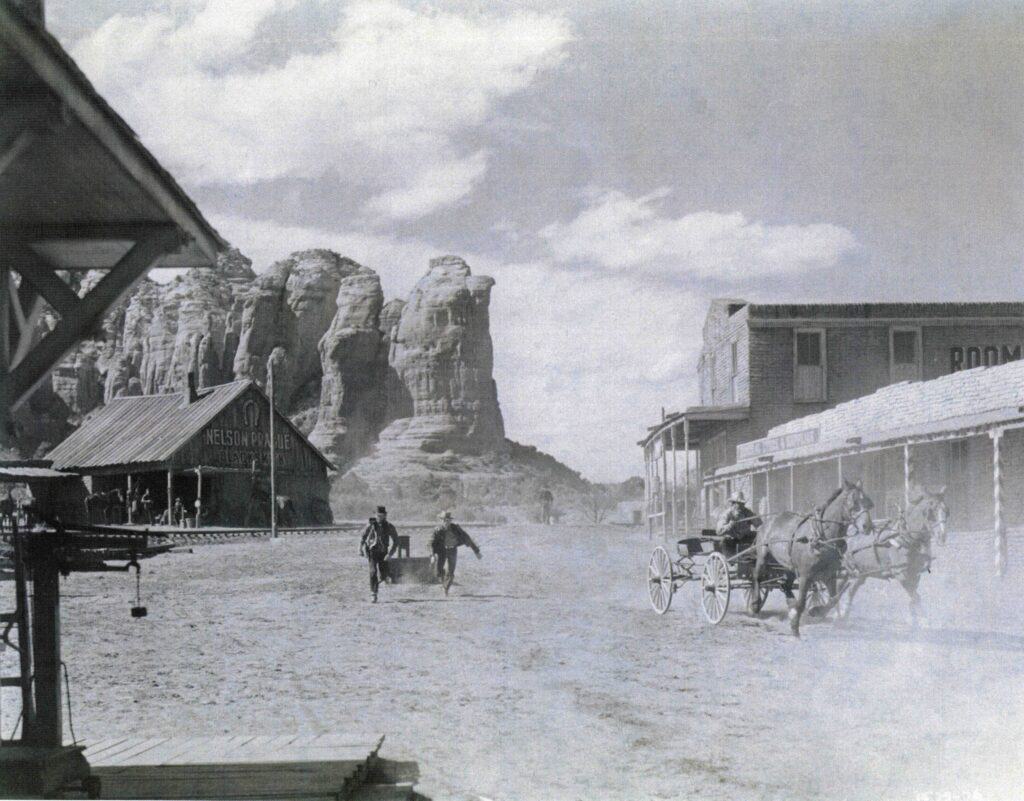
Photo courtesy of Sedona Heritage Museum #1000.1.2013
“These guys were trying to shoot between takeoffs and landings,” Trevillyan explained. “[Daves] said it came to him why he wouldn’t be able to come back to Sedona and make a Western anymore when he went down to Phoenix and got on the plane to fly home. And he pulled out a little airline brochure for Frontier Airlines and the brochure advertised, ‘Fly Frontier Airlines between Phoenix and Winslow. We fly over spectacular Sedona and Oak Creek Canyon, the setting of many major motion pictures.’”
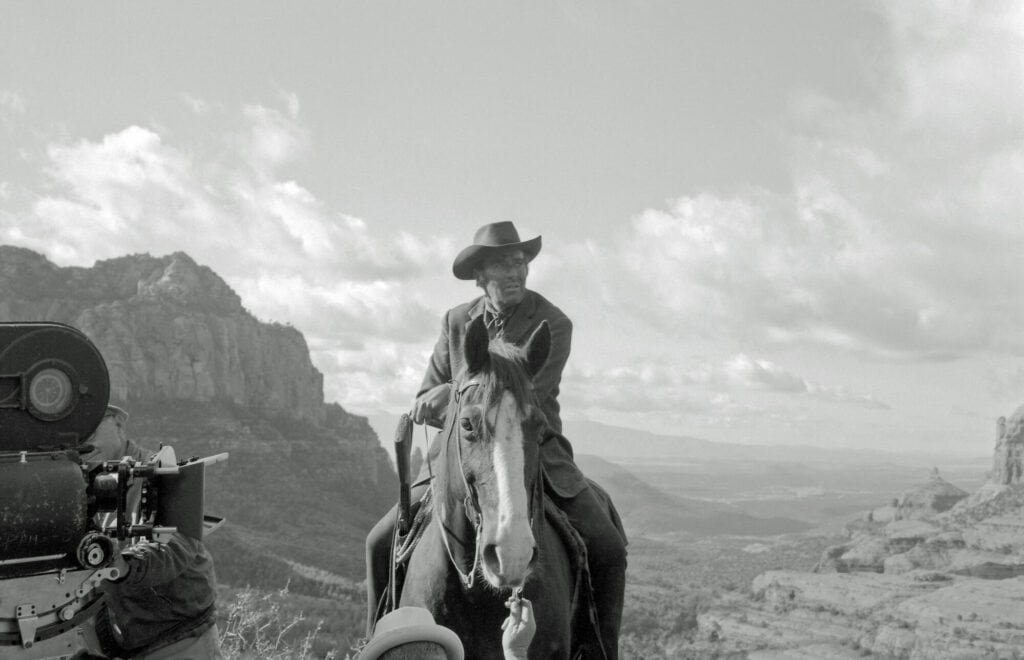
Photo courtesy of the Elizabeth Rigby Collection/Sedona Heritage Museum
Movie production in Sedona would continue for another decade, but modernity was encroaching on the collective dream of Western movies and the genre was waning in popularity.
“It’s the New West!,” proudly proclaimed the trailer for the 1965 bawdy modern comedy movie “The Rounders,” starring genre stalwarts Glen Ford and Henry Fonda. “Where the old swimming hole is now the state fish hatchery,” referring to the Page Springs Hatchery where some of the scenes were shot.
The end of Sedona’s run as the backdrop for Westerns, Trevillyan said, was the Elvis vehicle “Stay Away, Joe,” another comedy set in contemporary 1968 in which “The King” played the half-Navajo Joe Lightcloud.
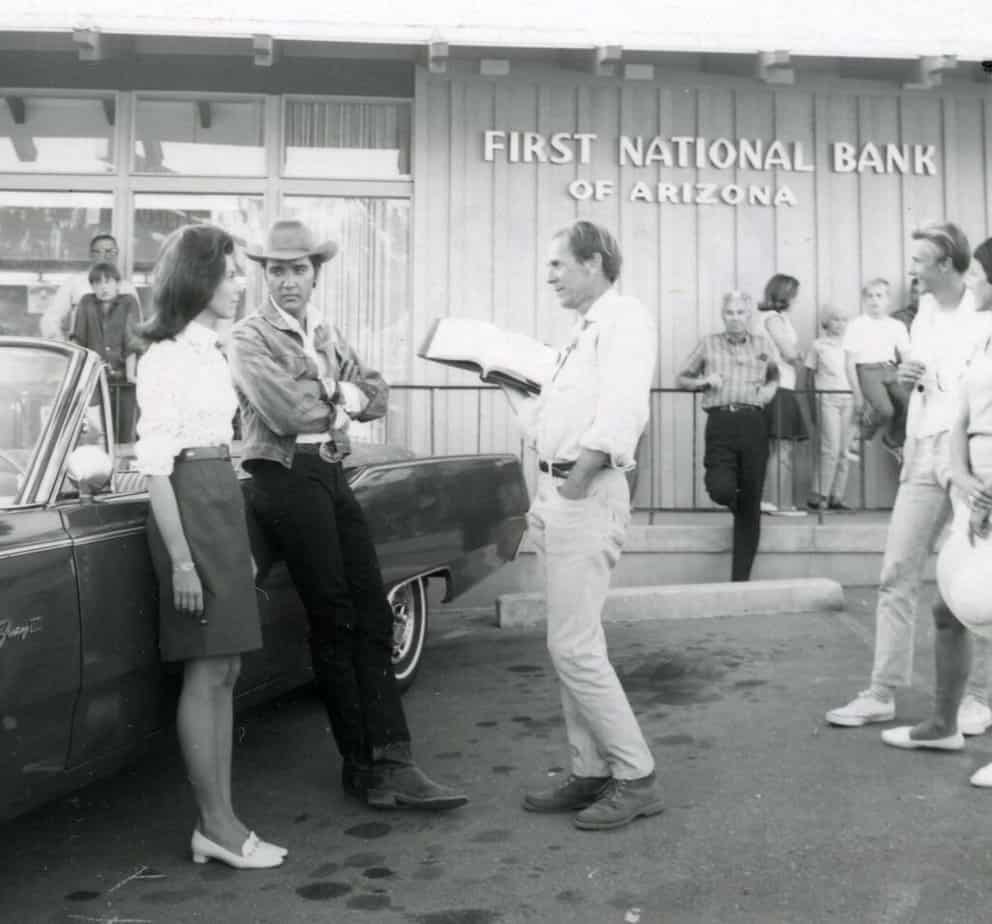
Photo courtesy of the Elizabeth Rigby Collection/Sedona Heritage Museum 1996.1
In the film, “Joe Lightcloud persuades his Congressman to give him 20 heifers and a prize bull so he and his father, Charlie, can prove that the Navajos can successfully raise cattle on the reservation,” according to Letterbox. “If their experiment is successful, then the government will help all the Navajo people. But Joe’s friend, Bronc Hoverty, accidentally barbecues the prize bull, while Joe sells the heifers to buy plumbing and other home improvements for his stepmother.”
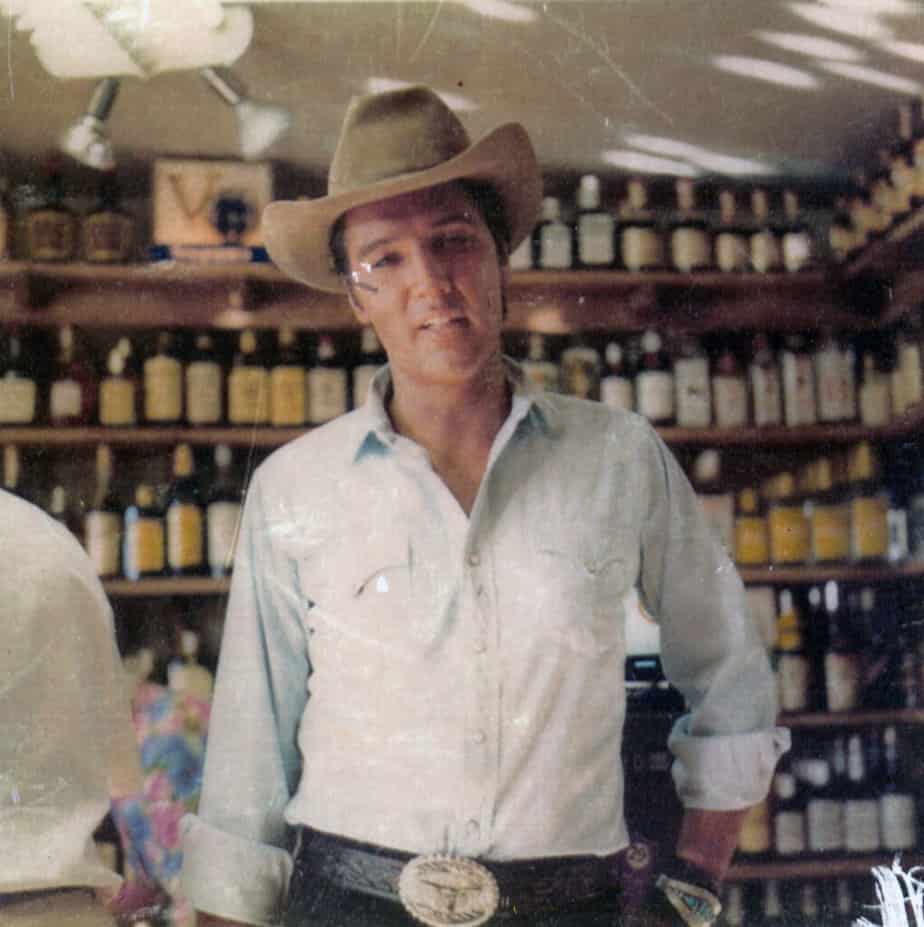
Photo courtesy of the Elizabeth Rigby Collection/Sedona Heritage Museum 2018.22
Trevillyan charitably described it as “probably the worst movie Elvis ever made, [but] we are very proud to say it was made in Sedona.”
“In Sedona we were never a transportation hub, never had a factory, [we] didn’t have mining,” Trevillyan said. “When you look at other places in the country, locals may say, ‘Our town was created because the train came through.’ That’s not the reason Sedona is here. Because we didn’t have any of those things. But when you look at our economy, we start with agriculture, we go to movies, and we go to tourism … Maybe that’s the legacy?”




















